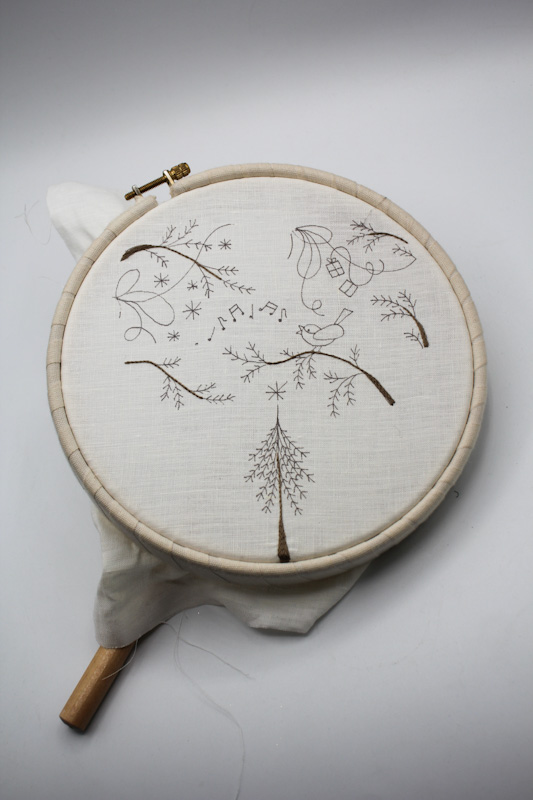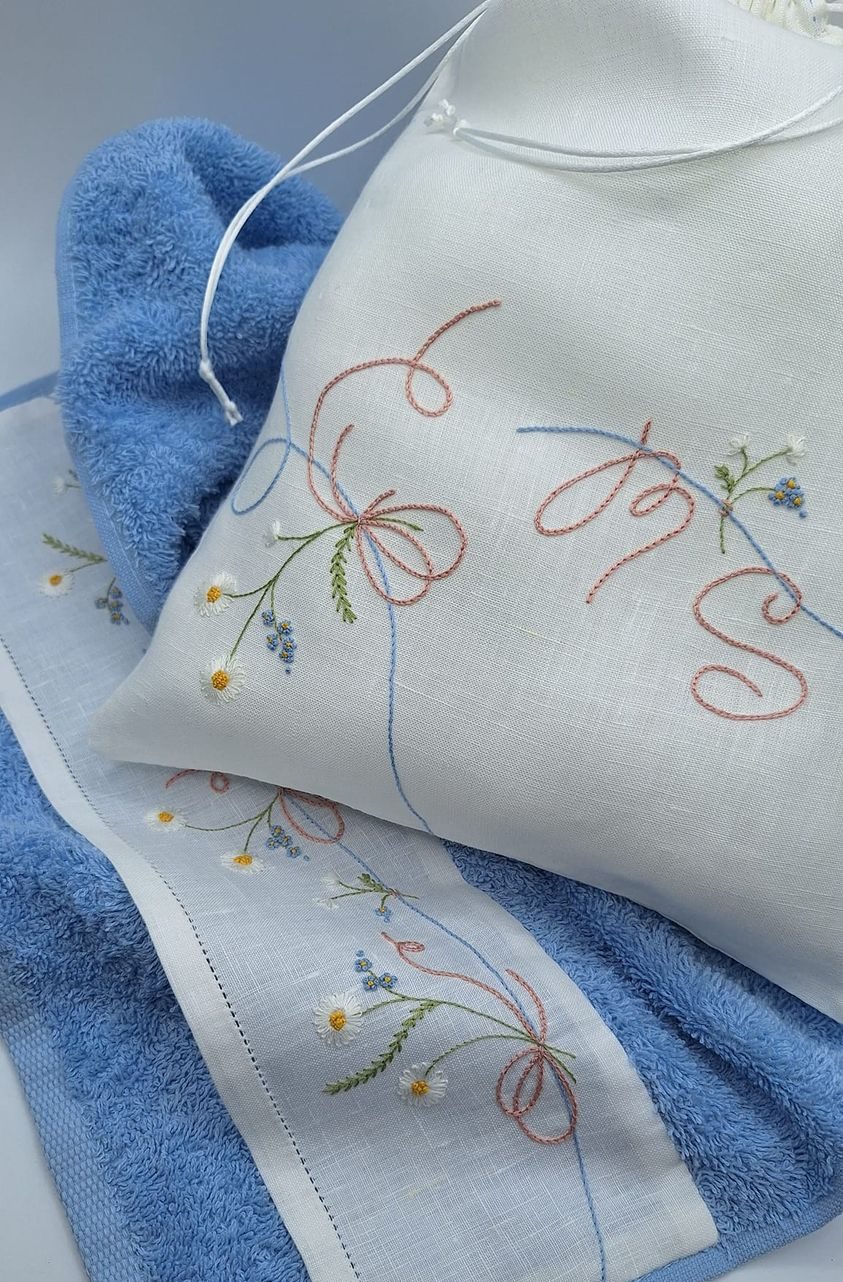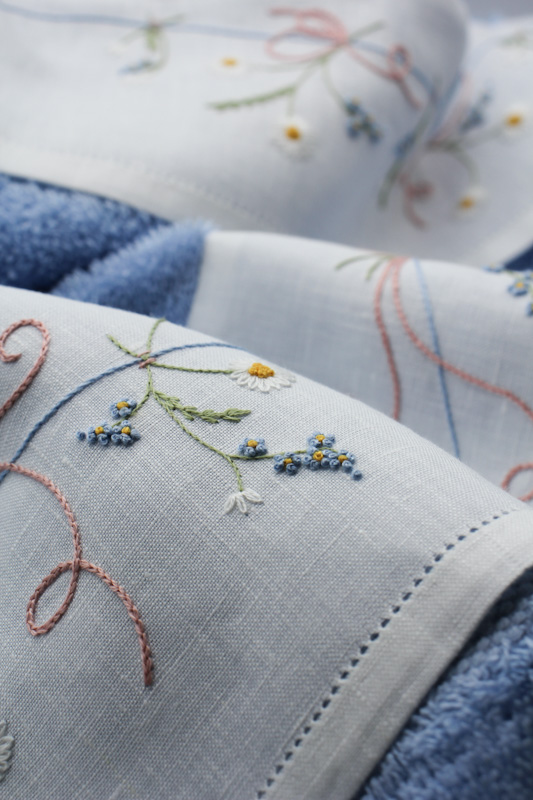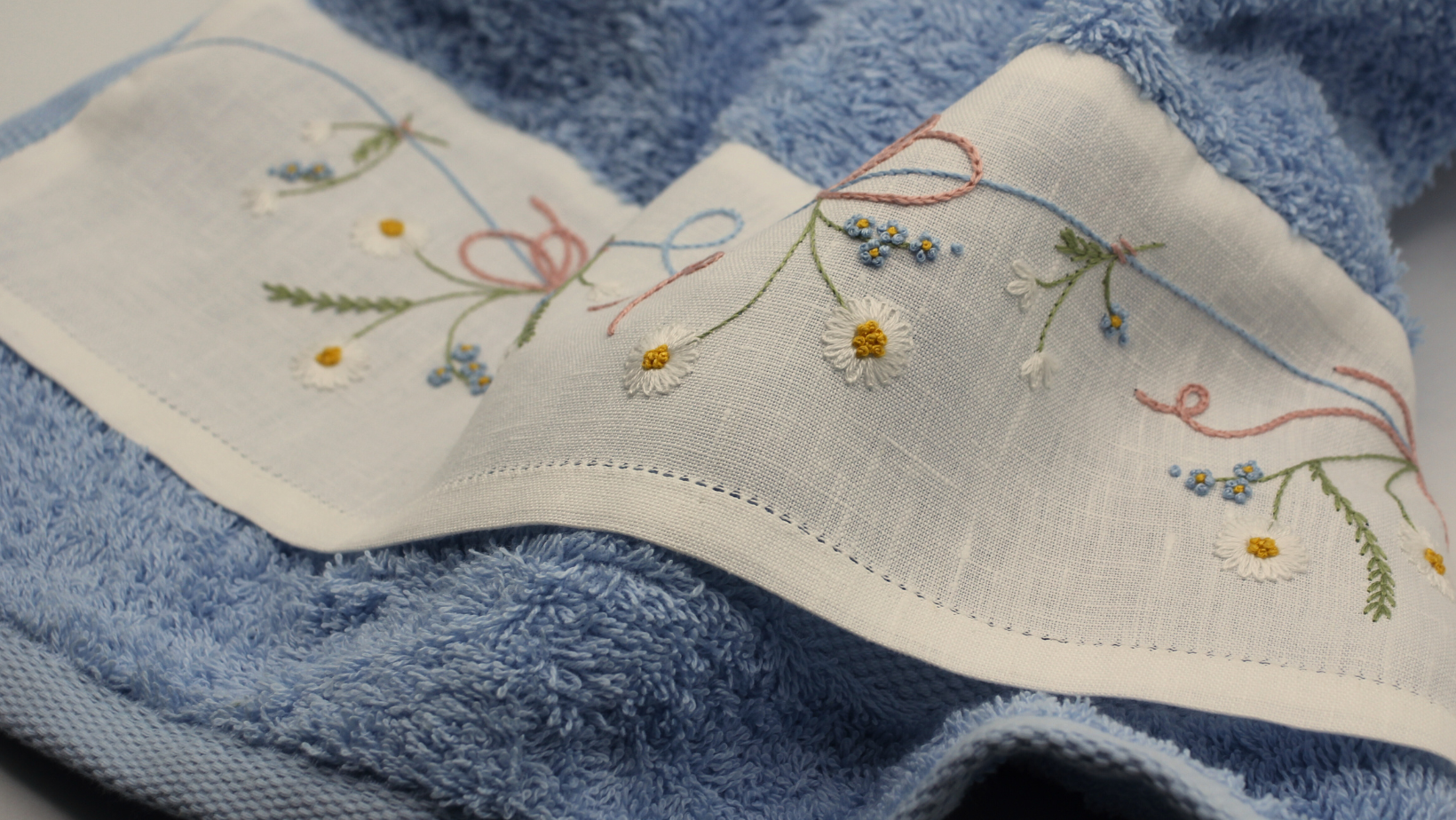
It was enough to unroll the first skein to peer back at the landscape beyond the fogged-up windows.
A light, slightly greyish shade of brown: DMC 3790.
I had taken out a long piece of thread to be folded in half, so that I could work with two mulinè strands: the advantage of folding the thread is that you can use the loop method to start the needlework.
I had taken a No. 9 embroidery needle and pinned on the canvas.
Outside the snow was falling lightly. The sky was grey. A movement had caught my attention…. A sudden shaking of a protruding, flexible branch in front of my eyes, from which the accumulated snow had suddenly fallen. A man, at the base of the fir-tree, with one hand resting on the trunk, as if listening to its beat. Motionless. His gaze towards the top, as if he was measuring its height.
I watched him for a while but then my eyes returned to chase my hands, which had begun to embroider the branches in stem stitch.

When I explain the stem stitch in courses, I am always amazed at the reaction to some of my remarks. I have discovered that there are two small platitudes, which are almost always greeted as a great revelation. The first is that to control the tension of stem stitches (any stitch, really), you have to pull the thread following the direction of the needle point. The second is that the first and last stitches must be doubled, i.e. we must not start with a stitch twice as long and exit at its halfway point (as seen in so many animations), unless I am embroidering a circle. The same goes for the final stitch, to be doubled as I have drawn above.
When I work with the hoop, I work the stem stitch by holding the thread in suspense with one finger, so that I can return with the needle to the end of the previous stitch.

I had embroidered all the thinner branches and then peeked at the scene beyond the window. The man had disappeared and my curiosity flared.
I had distracted myself with the embroidery of the thicker branches and fir trunks, the thicknesses of which I had solved by working consecutive rows of stem stitch. Ideally, when juxtaposing rows of stem stitch, one should always be able to work in the same direction, and this unfortunately means that it will be necessary to weld and restart the needlework at each new beginning, or to slip the thread on the reverse side, under the other stitches.

As I finished the trunk of my fir tree, I could see the lights in your rooms going out one by one and the stars taking over, imposing rest and a return to work in a few days. Just enough time for the firs of all canvases to have their branches and trunks.




Leave A Comment